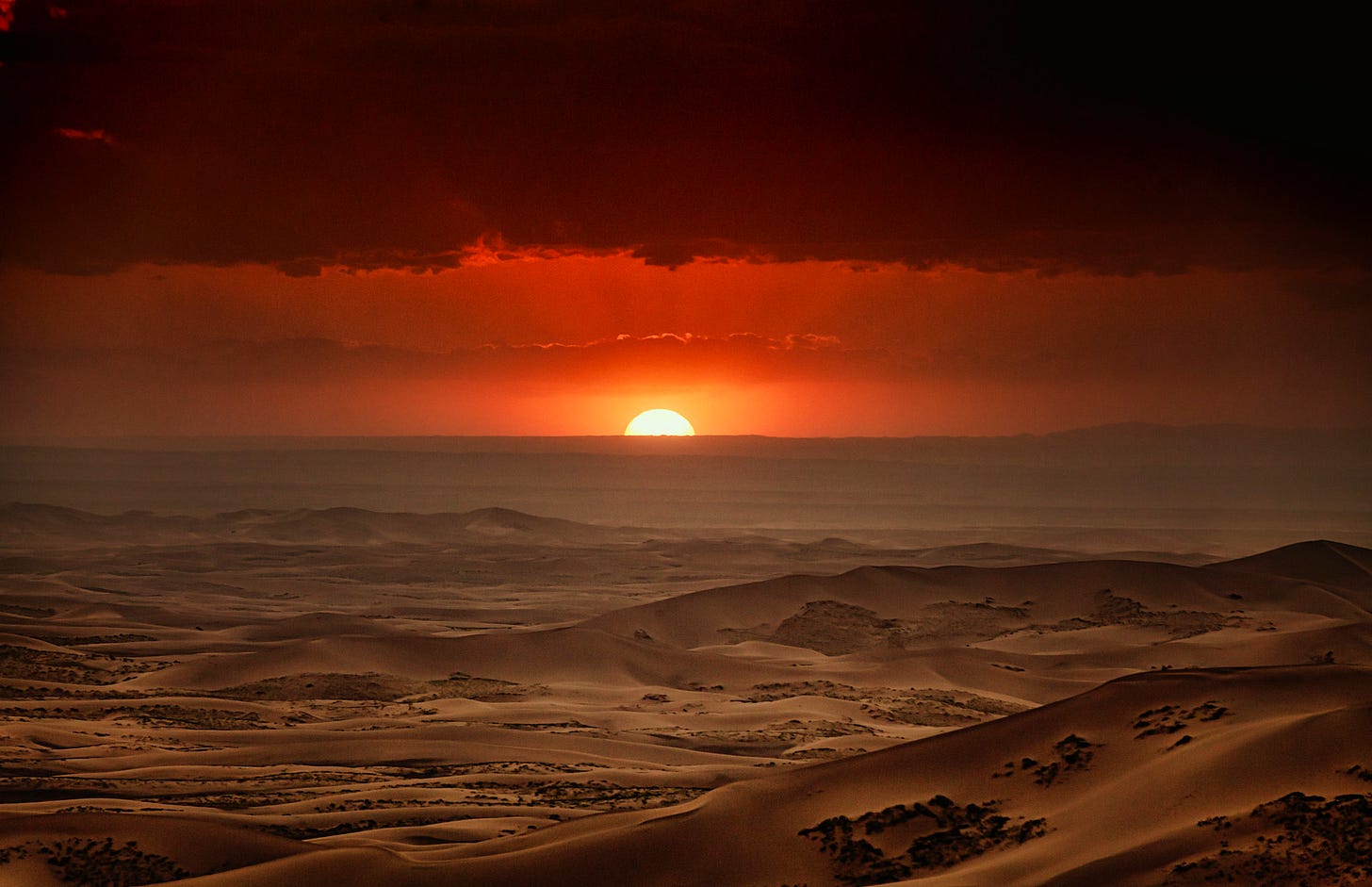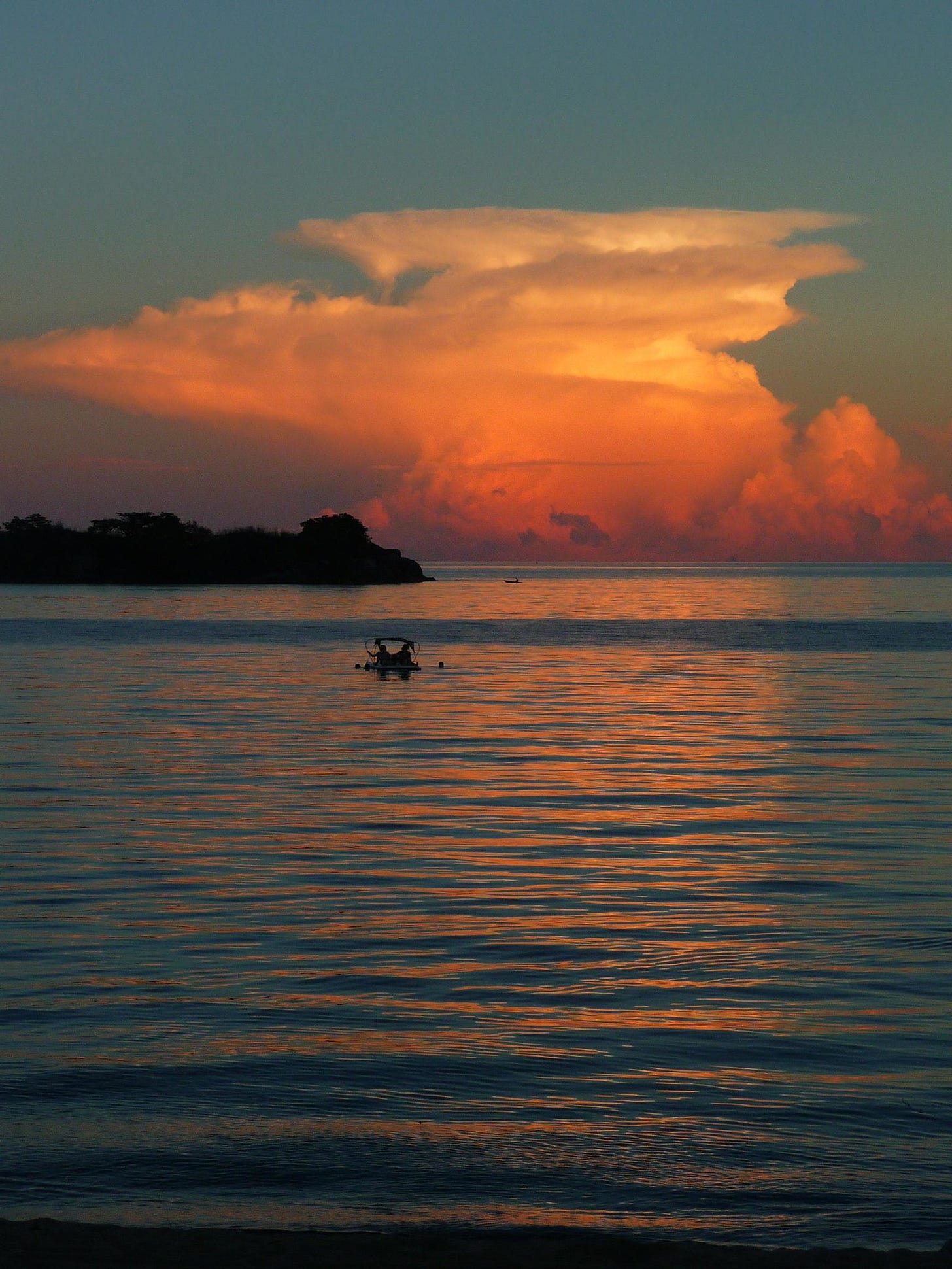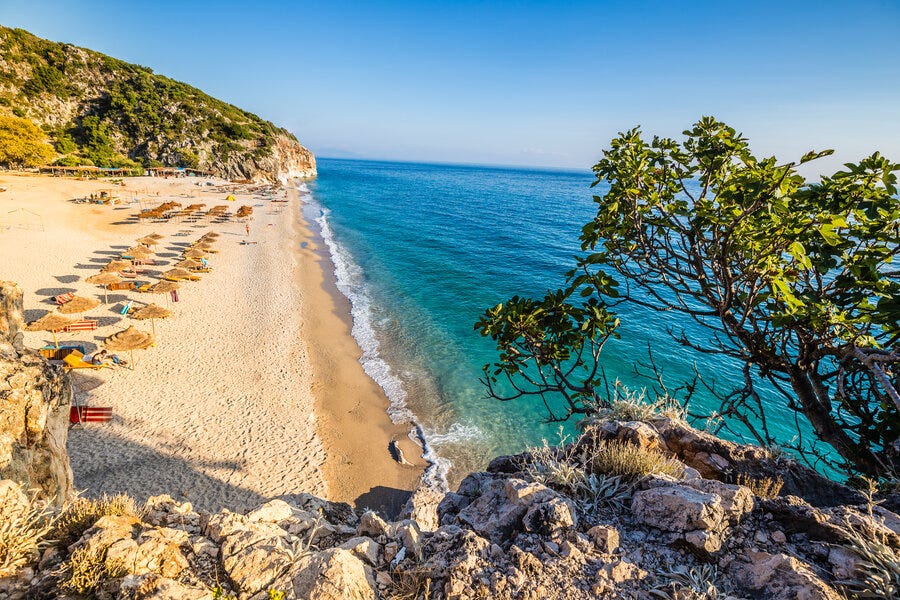Global Climate Impacts: Where Is Climate Change Affecting the World This Week?
Climate Change Is Reshaping Daily Life Across Asia, North America, and East Africa — From Fashion and Labor Laws to Love Songs in the Wild.
This week we’re taking a look at how climate change is interacting with food systems, labor, and ecosystem shifts across several regions experiencing climate-driven heat this week, according to Climate Central’s Climate Shift Index1. In Mongolia, extreme heat and drought are following one of the worst winters on record, straining herders and wildlife. In southern Africa, prolonged drought is pushing more women into informal and dangerous work like sand mining, while rising soybean prices — tied in part to El Niño and poor harvests — are making basic protein sources harder to afford. In Zimbabwe, the compounding effects of heat, land degradation, and illegal mining are reshaping rural life. And in Southeastern Europe’s Balkan region, we’re diving into how shifting weather patterns are diluting regional gin production and distillery sales—plus, how Albania’s coastline is rapidly retreating under the dual pressure of sea-level rise and accelerating coastal erosion.
Need to read this in a language other than English? Try OpenL (up to 1,500 characters) or Google Translate—both offer free translations into 100+ languages.
Mongolia, Inner Mongolia
This week, parts of Mongolia are experiencing temperatures up to 16°C above normal. While not all impacts play out instantly, this heat is part of a broader climate pattern reshaping life on the steppe.
Mongolia is one of the most climate-vulnerable countries in the world. Rising temperatures —already up 2.5°C in the past 80 years — more frequent dzuds (harsh winter disasters — and yes, climate change doesn’t mean places just become hotter all the time), and degraded pastures are placing immense pressure on nomadic herders. This past winter, Mongolia saw the most snowfall in the past 50 years, triggering a dzud that killed nearly 6 million animals (9% of the total) and impacted 20 out of the country’s 21 provinces. These extreme winters are becoming more common, with 6 dzuds in the past decade, and more deadly. Summer drought and land degradation leave animals without the fat reserves they need to survive, and rising temperatures are disrupting seasonal patterns, causing freeze-thaw cycles that trap grass beneath layers of ice and make grazing impossible. Temperatures this week will push up to between 25 and 35°C in provinces that are already facing early drought warnings, raising concern for a hotter-than-normal summer that could worsen dry conditions and contribute to the seasonal whiplash putting herding systems at risk.
The cashmere industry, deeply rooted in Mongolian herding culture, is also increasingly strained by this climate volatility. Rising temperatures and more frequent droughts are reducing pasture availability and preventing goats from gaining the weight they need to grow thick, high-quality undercoats. As a result, cashmere fibers are becoming shorter and coarser, lowering their market value. The pattern of hot, dry summers followed by severe winters can lead to mass livestock die-offs.
In response, many are combining long-standing practices with new tools and strategies to adapt. The ENSURE project, supported by UNDP and the Global Environment Facility, is helping herders form cooperative groups, manage pastures more sustainably, produce nutrient-rich animal feed, and voluntarily reduce livestock numbers to ease stress on the land. While some continue traditional migrations using ox-drawn carts to reach cooler highlands, others are building revolving funds from cashmere or meat sales to invest in irrigation and feed systems.
Desertification in Mongolia’s Gobi Desert — which covers 1.3 million km2 and is the second largest rain shadow desert in the world — is reshaping insect life. Recent research has found that climate change is driving major shifts in the genetic structure and habitat ranges of Mongolia’s dung beetle species, which are key decomposers of their fragile ecosystem. Dung beetles are a widely recognized bioindicator due to their environmental sensitivity and essential ecological processes they perform such as nutrient cycling and parasite suppression. One desert-adapted species, Cheironitis eumenes, is expected to lose nearly all of its current range by 2070 under severe warming scenarios, with its populations contracting in even areas once considered suitable. Meanwhile, steppe beetles like Colobopterus erraticus are shifting towards higher elevations in search of cooler conditions.

Gobi sunset II by Yiannis Chatzitheodorou via flickr (CC BY-NC-SA 2.0.)
Zambia, Malawi, Zimbabwe
In Malawi, climate change is increasingly disrupting access to lifesaving healthcare. Fueled by warming oceans and rising global temperatures, stronger and more frequent cyclones — like Idai, Gombe, Freddy, and most recently, Jude — have devastated the country’s southern region. Flooding has repeatedly shut down facilities like Mbenje Health Centre, which serves over 32,000 people and provides outpatient, maternity, HIV, nutrition, and child health services. This season alone, the center has been forced to close four times, sometimes for up to two weeks, leaving patients without access to critical antiretroviral medication. Across Africa, warming temperatures are intensifying floods and droughts, degrading infrastructure, expanding the range of vector-borne diseases like malaria and Rift Valley fever, and threatening public health systems.
In Zimbabwe’s Gwanda region, smallholder farmers are caught in a crisis of intensifying climate change and unregulated gold mining. Decades of warming have driven increasingly severe droughts — exacerbated by heat — and erratic rainfall, leaving many families with failed harvests and deepening poverty. These climate stressors are compounded by illegal small-scale mining, which has deforested mopane trees, polluted water, and destroyed farmlands and roads. Increasing temperatures in the region are reducing crop availability, forcing many farmers to shift to heat-tolerant goats and drought-resistant plants. But even these adaptations are under threat, as mining pits injure livestock and jeopardize the possibility of stable food production. An estimated 400,000 illegal miners are currently operating in Zimbabwe, escalating the pressure on rural communities.
Women in particular face the brunt of these burdens. As men migrate for work and Mopane tree harvests are decimated by tree loss, many women are left to survive on informal and precarious work. In previous droughts, many could gather over 30 buckets per season — enough to pay for food, clothing, and school fees. Now, with that income source gone, many are forced to rely on precarious work such as selling food, doing laundry for miners, or, in some cases, sex work.
In Malawi, worsening heat, drought, and crop failure are pushing more women into sand mining, a job that is more physically grueling and environmentally destructive. This year, Malawi joined neighboring countries in declaring a state of disaster due to prolonged drought, driven in part by El Niño and made more likely by climate change. As maize crops fail and food insecurity rises, women are mining and selling sand from the shrinking shores of Lake Malawi to support their families with food and school supplies. But unregulated extraction is accelerating shoreline erosion, degrading land, and increasing the risk of flooding — especially dangerous as La Niña conditions could bring heavy rains and flooding later this year. Mining activities also pollute the surrounding water. While the work was once male-dominated, more women and children are now braving the heat, moving up to four tonnes of sand per day, often for little pay.
In Malawi and Zambia, climate change (and El Niño) driven drought has upended soybean production — and with it, access to affordable protein. Soybeans are a component of poultry feed, and poultry remains one of the region’s most accessible protein sources. But in 2024, Zambia saw a staggering 74% drop in soybean yields, driven by poor rains during the El Niño cycle, a phenomenon which research suggests is becoming more intense due to global warming. Malawi, facing its worst drought in a century, saw a 20% drop in production. While climate played a major role, economists say the crisis was worsened by uncompetitive markets that left smallholder farmers troubled by low prices, poor storage options, and few buyers.
Recent studies show that the frequency and intensity of extreme El Niño events could double in the coming decades due to greenhouse gas-driven ocean warming, particularly in the eastern Pacific. While natural El Niño cycles occur every 2-7 years, many scientists believe that human-caused warming is intensifying the effects of El Niño, as elevated global temperatures are already associated with more extreme weather. Sea surface temperature extremes linked to El Niño have already increased by around 10% since pre-1960 levels. When strong El Niño phases occur on top of this warming trend, the result can be record-breaking heat and a greater likelihood of catastrophic events. The last major El Niño in 2015–2016 coincided with the hottest year ever recorded (before 2023…and 2024), triggering widespread droughts, floods, wildfires, agricultural disruption, and ecosystem instability.

Lake Malawi sunset 2 by Alan via flickr (CC BY-NC-ND 2.0)
The Balkans
Erratic rainfall patterns could be affecting the flavors of your favorite elixir - It may be “last call” for the sweet taste of your evening gin and tonic, yet another buzzkill-inducing impact of human-caused climate change. A new study from Heriot-Watt University found that juniper berries—the essential botanical that gives gin its signature piney, citrusy, and floral notes—are being affected by climate-influenced disruptions in the weather patterns over Southern Europe. Analyzing berries from Bosnia and Herzegovina, North Macedonia, Kosovo, Albania, Montenegro, Serbia, and Italy, researchers found that in years marked by heavier rainfall, the berries tended to absorb excess moisture thus taking longer to dry out prior to the distillation process. This overindulgence of H20 dilutes the berries’ inherent flavor compounds–by as much as 12%. That might not sound like much, but in the world of craft distilling, where subtlety matters, it’s enough to alter the character of your preferred gin.
Inconsistent or diminished gin quality can lead to consumer dissatisfaction and declining sales—a tall glass of concern for distillers who are now focused on implementing adaptation strategies, including adjusting harvest times, reassessing drying techniques and evaluating berries more closely before production. So if your next evening G&T tastes a little different, human-caused climate change may be the secret ingredient.
Riviera on the rocks: climate change crashes the Balkan beach party - Albania’s coastline—a nearly 500-kilometer stretch of sun-soaked beaches spanning the Adriatic Sea in the north and the Ionian Sea in the south, home to the famed Albanian Riviera—is grappling with the dual threat of surging tourism and climate-driven sea-level rise. Inspired by Albania’s crystal-clear turquoise waters, pristine beaches, pebbled coves, and dramatic cliffs, a tidal wave of tourists has swept into this Balkan nation famed for its tradition of warm hospitality, or mikpritja. Between 2018 and 2023, annual visitor numbers doubled from 5 to 10 million—triggering a surge in infrastructure development that now encroaches on the natural defenses that protect the coastline, including fragile sand dunes, coastal lagoons, and vital “barrier forests”. Concurrent to the tourism boom, climate change hazards, namely sea-level rise and increasing storm intensity, are further fueling coastal erosion. In places like Velipojë, the shoreline is retreating by more than five meters each year, consuming coastal forests and reshaping the land. The combination of rapid development and accelerated beach erosion is threatening both ecosystems and livelihoods, as the disappearance of beaches undermines the tourism industry that many locals depend on.
Lagoon systems, like Albania’s Kune-Vain, act as natural buffers from encroaching seawater thereby reducing beach erosion and limiting inland flooding. Along with lagoons, “barrier forests” serve as another key natural climate solution. These maritime forests stabilize surrounding sand dunes and curb erosion caused by incoming storms and rising seas, while also shielding inland towns from salt-laden onshore winds. Albania’s barrier forests, such as Pishë-Poros, provide not only physical safeguards, but sustain thriving ecosystems, providing habitat for a range of species and supporting local economies through fishing, farming, and eco-tourism.
In response to coastal climate hazards, Albania is investing in ecosystem-based adaptation measures, including reforestation and dune restoration projects. Supported by United Nations Environment Programme (UNEP), these efforts involve planting indigenous, climate-resilient tree species along sand dunes to strengthen their ability to withstand erosion.

We Would Love to Hear From You!
Have you noticed the impacts of extreme heat in your community? Whether it's unusual weather patterns or disruptions in local ecosystems, we'd love to hear your thoughts. Share your experiences or observations in the comments below and join the conversation!
Your Feedback Matters
At Global Climate Dispatch, we strive to provide accurate and equitable coverage of climate change and its impacts. If you come across anything that seems inaccurate or concerning, please don’t hesitate to let us know. Your insights help us ensure that the information we share remains truthful, balanced, and relevant to all.
Locations featured are chosen based on data from Climate Central's Climate Shift Index map. Some graphics used may also come from Climate Central's Climate Shift Index map. Any original analyses contained in this blog or any views expressed in this blog, unless otherwise noted, are solely the expression of its authors and are unaffiliated with Climate Central or any other entity or person referenced within.





Thanks for your regular posts, I’ve just posted an explainer of the process if you’re interested.
https://drtomharris.substack.com/p/how-is-climate-change-affecting-the
#climatechange #weather #attribution #heatwave #drought #flood #storm #showyourstripes
Heavily researched does not guarantee correct. Even one erroneous assumption in common renders pages of references, papers and citations useless. CAGW’s GHE contains three such assumptions.
GHE claims without it Earth becomes 33 C cooler, a 255 K, -18 C, ball of ice.
Wrong.
Naked Earth would be much like the Moon, barren, 400 K lit side, 100 K dark.
TFK_bams09 heat balance graphic uses the same 63 twice violating GAAP and calculating out of thin air a 396 BB/333 “back”/63 net GHE radiative forcing loop violating LoT 1 & 2.
Wrong.
Likewise, the ubiquitous plethora of clones.
GHE requires Earth to radiate “extra” energy as a BB.
Wrong.
A BB requires all energy leaving the system to do so by radiation. Per TFK_bams09 60% leaves by kinetic modes, i.e. conduction, convection, advection and latent rendering BB impossible.
GHE is bogus and CAGW a scam so alarmists must resort to fear mongering, lies, lawsuits, censorship and violence.